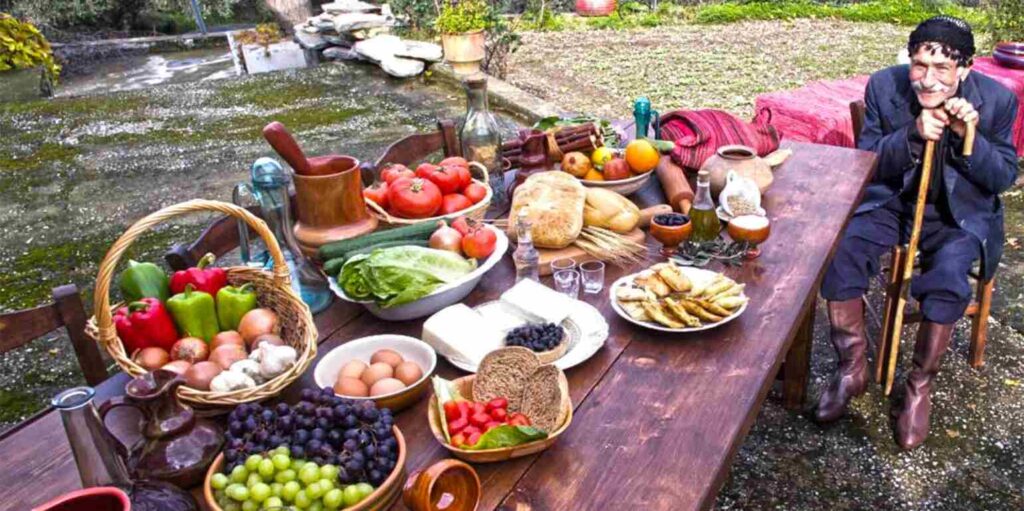The main centres of the Minoan civilization were Knossos, Phaistos, Malia, Zarko, and Gournia, where palace complexes have been found. In 1450 and again in 1400 BCE, a series of catastrophes, possibly caused by volcanic explosions on Santorini, led to their decline.
After the Roman conquest of Greece, Crete became a Byzantine province. Following this, for an entire century (824-961 CE), it was occupied by the Arabs and served as a base of operations for pirates, centred on Handaka, today’s Heraklion. Subsequently, Crete returned to Byzantium until the arrival of the Venetians, who remained on the island for approximately five centuries, leaving a profound impact on its culture. Aside from Heraklion, Chania and Rethymnon flourished in this era.
Turkish rule began in 1669 and ended in 1898, with the island officially becoming part of Greece in 1913. Another critical moment in the island’s history was the Battle of Crete in 1941, when the Axis powers invaded the island during World War II with an airborne attack. The battle is also crucial to the Cretans because of the unexpectedly bold resistance they mounted against the numerically superior German forces. The graves of 4.465 German soldiers from the Battle of Crete are found in the German war cemetery in Maleme.
The Cretan diet
The Cretan diet is rooted deeply in antiquity. It has survived under difficult conditions during the island’s conquest by the Arabs, the Venetians, and the Turks. Crete maintained its dietary traditions even during the Hellenistic period, when the Romans changed the eating habits of the entire Mediterranean.
More than 4,000 years ago, the ancient Cretans, known as the Minoans, consumed products that are now the basis of the Cretan diet. All international research supports the view that the Cretan diet is the best and most characteristic example of the Mediterranean diet. Modern nutritional science suggests that the Mediterranean diet promotes a longer life and better health.
The Cretan diet is one of the most renowned forms of the Mediterranean diet and is considered extremely healthy, offering numerous benefits for the heart, longevity, and overall well-being. Here are its main characteristics:
Key Elements of the Cretan Diet
- Vegetables and Fruits
- Consumed daily, usually seasonal and local.
- Typical examples: tomatoes, peppers, zucchini, eggplants, greens, and seasonal fruits like oranges, figs, and grapes.
- Olive Oil
- The primary source of fat. Used for cooking, salads, and bread.
- Rich in monounsaturated fats and antioxidants.
- Legumes
- Beans, chickpeas, lentils, and other legumes are consumed frequently as a primary source of protein.
- Whole Grains
- Bread, pasta, and other products, preferably whole-grain versions.
- Dairy
- Mainly feta cheese, yoghurt, and goat or sheep milk. Consumed daily but in moderate amounts.
- Fish and Seafood
- Consumed often, but not daily. Small fish and seafood are preferred.
- Meat
- Consumed less frequently than fish. Typically, lamb, goat, or chicken is usually reserved for celebrations or special occasions.
- Nuts and Seeds
- Almonds, walnuts, sesame, and pomegranate – eaten as snacks or added to dishes and desserts.
- Herbs and Spices
- Abundant in Crete: oregano, thyme, sage, mint, basil. They add flavour without extra salt.
- Wine
- Usually consumed in small amounts with meals.
Main Characteristics
Sweets are consumed in moderation, mostly made with honey or fruit.
The diet is plant-centred and high in fibre.
Low in red meat and processed foods.
Prefers simple cooking methods, such as boiled, baked, or vegetable-based dishes, without heavy sauces.
Protected Designation of Origin (PDO) and Protected Geographical Indication (PGI) products:
| Product | Designation of Origin or Geographical indication | Prefecture |
| Olive oil | Viannos (PDO) | Heraklion |
| Olive oil | Peza (PDO) | Heraklion |
| Olive oil | Acharnes (PDO) | Heraklion |
| Olive oil | Thrapsano (PDO) | Heraklion |
| Olive oil | Messara (PDO) | Heraklion |
| Olive oil | North Milopotamos (PDO) | Rethymno |
| Olive oil | Chania (PGI) | Chania |
| Olive oil | Kolimvari (PDO) | Chania |
| Olive oil | Apokoronas (PDO) | Chania |
| Olive oil | Selino (PDO) | Chania |
| Olive oil | Sitia (PDO) | Lasithi |
| Fruits, vegetables, dried nuts | Oranges of Maleme (PDO) | Chania |
| Fruits, vegetables, dried nuts | Soultanina raisins (PDO) | Chania, Lasithi, Rethymno, Heraklion |
| Olives | Throumba of Ambadia (PDO) | Rethymno |
| Cheese | Graviera of Crete (PDO) | Chania, Lasithi, Rethymno, Heraklion |
| Cheese | Xinomizithra of Crete (PDO) | Chania, Lasithi, Rethymno, Heraklion |
| Cheese | Pichtogalo (PDO) | Chania |
| Cheese | Xigalo (PDO) | Lasithi |
| Bakery | Cretan paximadi (PDO) | Chania, Lasithi, Rethymno, Heraklion |
| Honey | Cretan Thyme & Pine honey (PDO) | Chania, Lasithi, Rethymno, Heraklion |
| Wine | Archanes (PDO) | Heraklion |
| Wine | Daphnes (PDO) | Heraklion |
| Wine | Peza (PDO) | Heraklion |
| Wine | Sitia and Malvazia of Sitia (PDO) | Lasithi |
| Wine | Chandakas, Candia & Malvazia Chandakas, Candia (PDO) | Heraklion |
| Wine | Crete (PGI) | Crete |
| Wine | Lasithi (PDO) | Crete |
| Wine | Heraklion (PDO) | Heraklion |
| Wine | Rethymno (PDO) | Rethymno |
| Wine | Chania (PDO) | Chania |
| Wine | Kissamos (PDO) | Chania |




